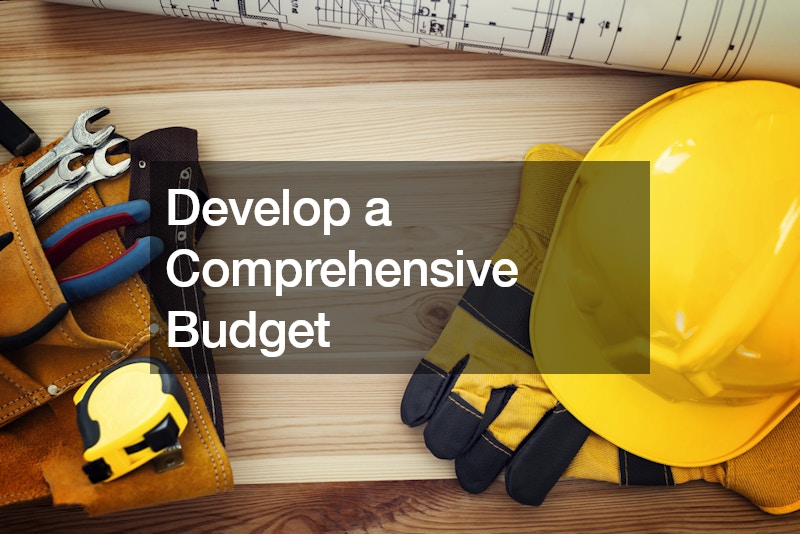Managing a multifamily construction project involves orchestrating a complex array of tasks, from the initial design and planning stages to the final handover of the units. These projects require meticulous attention to detail, efficient resource management, and a clear communication strategy. Here’s a detailed guide on how to successfully manage a multifamily construction project:
1. Feasibility and Pre-Planning
Conduct a Market Analysis: Before breaking ground, conduct a comprehensive market analysis. Understand the demand for multifamily units in the targeted area, the average rent or sale price, and the preferences of potential tenants or buyers.
Feasibility Study: Alongside market analysis, a feasibility study helps determine the financial viability of the project. This involves analyzing costs, potential returns, funding sources, and economic conditions.
Site Selection: Choose a location that aligns with market needs and regulatory requirements. Consider factors such as accessibility, local infrastructure, zoning laws, and environmental impacts.
2. Design and Planning
Assemble a Skilled Team: Building a multifamily unit requires a diverse team of professionals, including architects, engineers, contractors, and property managers. Select individuals and firms with experience in multifamily projects to ensure quality and efficiency.
Create Detailed Plans: Work closely with architects to develop detailed blueprints that meet both aesthetic and functional requirements. Plans should include layouts of individual units, shared amenities, parking, landscaping, and other infrastructure.
Secure Permits and Approvals: Navigating the regulatory environment is crucial. Obtain all necessary permits and approvals from local, state, and possibly federal agencies before commencing construction.
3. Budgeting and Financing
Develop a Comprehensive Budget: A detailed budget should include all costs related to construction, labor, materials, permits, and contingency plans. It’s essential to be realistic and include a buffer for unforeseen expenses.
Arrange Financing: Securing financing is a critical step. Options include construction loans, commercial mortgages, or investment from real estate partners. Ensure the financing terms align with project goals and cash flow projections.
4. Construction Phase
Choose the Right Contractors: Hiring the right contractors is pivotal. Conduct thorough due diligence to ensure they have the necessary skills, reliability, and capacity to handle a project of this scale.
Schedule Management: Develop a detailed timeline for the project. Use project management software to track progress, manage deadlines, and ensure that the project remains on schedule.
Quality Control: Implement rigorous quality control measures at every stage of construction. Regular inspections and audits help ensure that the construction meets all specified standards and codes.
Risk Management: Identify potential risks, including delays, budget overruns, and regulatory issues. Develop strategies to mitigate these risks, such as having alternative suppliers or additional financing options in place.
5. Communication and Reporting
Maintain Open Lines of Communication: Regular communication with all stakeholders—including investors, contractors, and local authorities—is essential. Weekly meetings and updates can help address issues promptly and keep the project moving smoothly.
Transparent Reporting: Keep detailed records and reports to track the project’s progress and financial status. Regular reports to investors and stakeholders help maintain trust and can aid in decision-making.
6. Marketing and Leasing
Develop a Marketing Strategy: As the project nears completion, begin marketing the units. Tailor marketing efforts to target demographics identified during the market analysis phase.
Leasing Operations: Set up a leasing office to handle inquiries, show units, and process applications. Ensure the leasing team is well-trained and equipped to sell the benefits of the units effectively.
7. Project Closeout and Evaluation
Final Inspections and Approvals: Conduct thorough final inspections with local building officials to ensure compliance with all building codes and regulations. Obtain necessary occupancy certificates.
Post-Construction Evaluation: After project completion, conduct a post-construction evaluation to assess what went well and what could be improved. This evaluation will inform future projects and help refine processes.
Managing a multifamily construction project is a dynamic and demanding process that requires a strategic approach and robust management skills. By meticulously planning, maintaining open communication, and enforcing strict quality controls, you can ensure the successful completion of a project that meets all stakeholders’ expectations and provides a valuable asset to the community.
.

